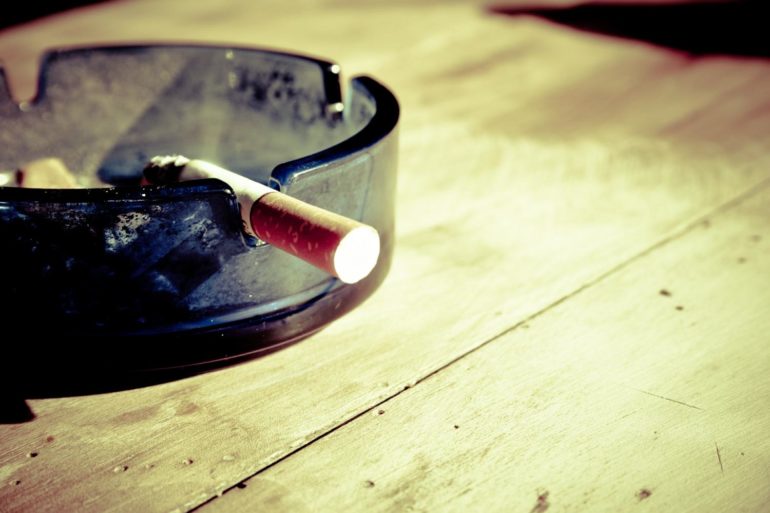People who are exposed to secondhand smoke could have a 51% higher risk of developing oral cancer, suggests a review of existing research published online in the journal Tobacco Control.
Oral cancers—lip, oral cavity and oropharynx cancers—account for 447,751 new cases of cancer and 228,389 deaths every year globally. Significant risk factors for these forms of cancer include tobacco smoking and use of smokeless tobacco, consumption of alcohol, and betel quid chewing.
Tobacco smoke forms the largest exposure of humans to chemical carcinogens and it causes one out of five cancer-related deaths in the world.
However, it is not only active smokers affected as, according to data from 192 countries, 33% of male non-smokers, 35% of female non-smokers and 40% of children were exposed to involuntary smoking during one year by inhaling secondhand tobacco smoke.
Previous research has shown that inhaling secondhand smoke causes several diseases, including lung cancer. Although tobacco smoking is a known cause of oral cancer, it has not yet been established whether or not secondhand smoke also causes oral cancer.
So an international team of researchers from Portugal, UK, Spain, and the U.S., set out to evaluate if there was a potential association between secondhand smoke exposure and the risk of oral cancer.
They reviewed and analysed five existing relevant studies involving 6,977 people collectively of whom 3,452 were exposed to secondhand smoke and 3,525 were not. These studies had been carried out in Asia, Europe, North America and Latin America.
Analysis showed that people who were exposed to secondhand smoke had a 51% higher risk of developing oral cancer.
In addition, the duration of exposure of more than 10 or 15 years increased the risk of oral cancer to more than twice compared with non-exposed individuals.
The authors acknowledge that their analysis only involved a small number of studies, but that several of the original studies had already pooled many individual studies so the overall number of cases and controls for the new meta-analyses was high.
As such, they conclude: “This systematic review and meta-analysis supports a causal association between secondhand smoke exposure and oral cancer. Moreover, the analyses of exposure response, including by duration of exposure (more than 10 or 15 years) to secondhand smoke, further supports causal inference.”
They add: “The identification of the harmful effects of secondhand smoke exposure provides guidance to public health professionals, researchers, and policymakers as they develop and deliver effective secondhand smoke exposure prevention programmes and adopt appropriate measures to implement guidelines in Article 8 of the WHO’s [World Health Organization] Framework Convention on Tobacco Control.”
Secondhand smoke causing thousands of still births in developing countries
More information:
Secondhand smoke exposure and oral cancer risk: a systematic review and meta-analysis, Tobacco Control (2021). DOI: 10.1136/tobaccocontrol-2020-056393
Provided by
British Medical Journal
Citation:
Secondhand smoke appears to heighten risk of oral cancer (2021, April 26)
retrieved 26 April 2021
from https://medicalxpress.com/news/2021-04-secondhand-heighten-oral-cancer.html
This document is subject to copyright. Apart from any fair dealing for the purpose of private study or research, no
part may be reproduced without the written permission. The content is provided for information purposes only.



